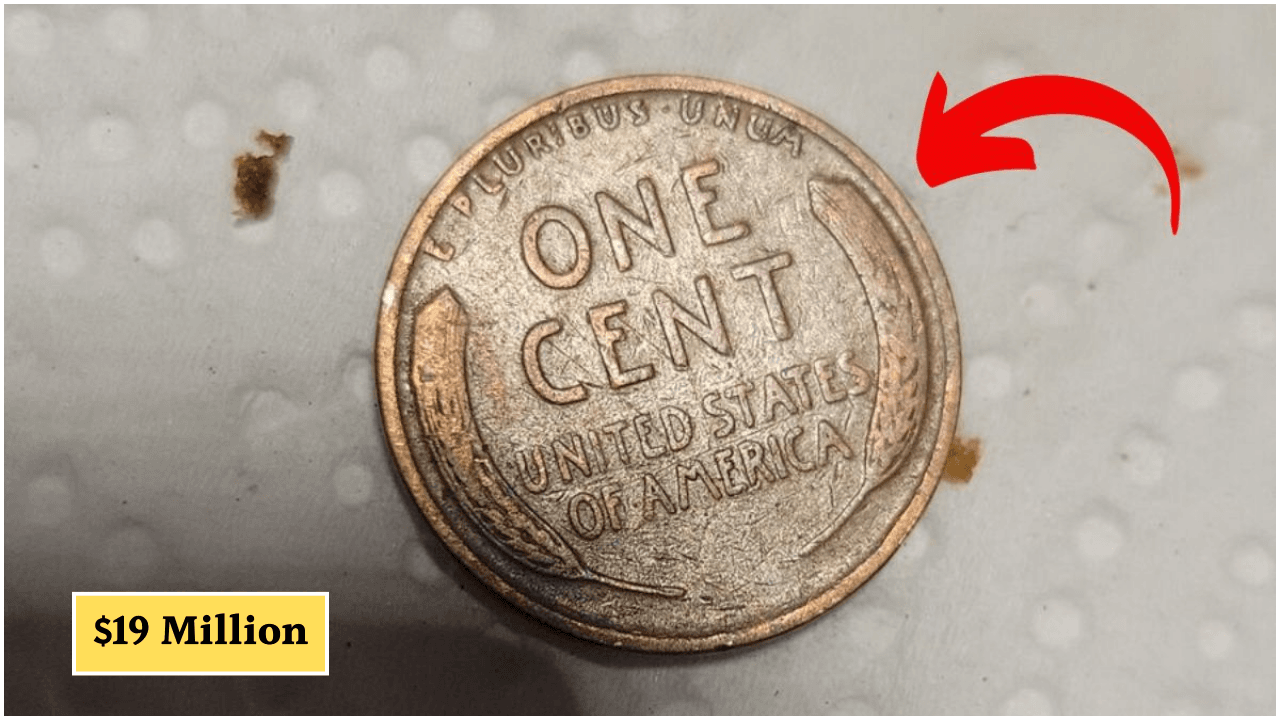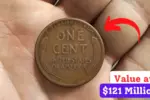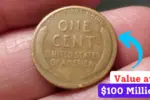The Rare Lincoln Wheat Penny Worth $19 Million : In the world of coin collecting, few stories are as captivating as the one surrounding the rare Lincoln Wheat Penny, allegedly worth a staggering $19 million. This coin, which has become the subject of widespread intrigue, raises questions about how such a seemingly ordinary piece of currency can hold such extraordinary value. Could it still be circulating, waiting to be discovered in someone’s pocket or coin jar? Let’s explore the historical significance, factors that contribute to its value, and the fascinating possibility that this rare penny could still be out there.
Historical Background of the Lincoln Wheat Penny
The Lincoln Wheat Penny, first minted in 1909, marks a pivotal moment in American numismatic history. Not only did it commemorate the 100th anniversary of President Abraham Lincoln’s birth, but it also became the first U.S. coin to feature the portrait of a sitting president. Designed by Victor David Brenner, the coin features Lincoln’s profile on the obverse and two stalks of wheat on the reverse, a symbol of America’s agricultural roots. The Wheat Penny was produced until 1958, when it was replaced by the Lincoln Memorial design.
Since its introduction, the Lincoln Wheat Penny has been a staple of American currency, though certain years and mint marks are much rarer than others. These rare pennies, often featuring unique characteristics or errors, are highly sought after by collectors.
The $19 Million Lincoln Wheat Penny: What Makes It So Valuable?
The penny worth an astonishing $19 million is likely a unique specimen, one with certain factors that set it apart from the billions of other Lincoln Wheat Pennies that were minted. There are several reasons why a coin of this caliber could reach such an extraordinary valuation:
Minting Errors or Rare Variations
One of the most significant contributors to a coin’s value is the presence of a minting error or rare variation. The Lincoln Wheat Penny series is known for a variety of errors that have emerged over the years. These include misstrikes, double dies, off-center strikes, and missing or incorrect mint marks. One example that stands out in history is the 1943 copper penny, produced in error during a time of wartime metal shortages when the U.S. Mint was supposed to use steel. Any 1943 copper pennies in circulation are highly valuable, but a specimen in perfect condition could command millions.
Exceptional Condition
For a coin to be worth millions, its condition must be pristine. Coin grading services use a 70-point scale to assess a coin’s state of preservation, with 70 representing a perfect coin that has never been used. The $19 million Lincoln Wheat Penny would likely be in mint state, showing no signs of wear, scratches, or damage. The higher the grade, the more valuable the coin. This penny would need to have been preserved in a near-perfect state to fetch such an incredible price.
Historical Significance
Historical context plays a major role in the valuation of rare coins. The Lincoln Wheat Penny, produced during a time of significant change in the United States, represents not only a connection to a president but also a piece of America’s monetary history. Any coin linked to major events, like wartime production shifts or design changes, can see its value skyrocket, particularly if the coin has a direct historical connection.
Unique Characteristics
In some cases, a coin can have special characteristics that set it apart from others. For example, the penny might have been struck with an unusual metal composition, or it may possess features that suggest it was minted at a particular time or under specific circumstances that make it highly coveted by collectors.
Could This Rare Penny Still Be in Circulation?
Now that we understand the factors that contribute to a penny’s extraordinary value, the question remains: Is it possible that the $19 million Lincoln Wheat Penny is still circulating today? The short answer is yes, although it is highly unlikely.
While most rare coins of this caliber have long been removed from circulation and stored in collections, the possibility of a valuable penny slipping through the cracks remains. After all, a significant number of Lincoln Wheat Pennies were minted over several decades, and many of these coins were saved in jars, albums, or forgotten collections. Coins that were once thought to be common may, with a discerning eye, reveal rare characteristics that increase their worth.
In fact, rare coins sometimes resurface through estate sales, auctions, or coin shops, where they are rediscovered by collectors who have the expertise to identify their true value. It is not out of the realm of possibility that the $19 million Lincoln Wheat Penny is hiding in someone’s collection or, in rare cases, could still be circulating in the wild.
How to Identify Valuable Lincoln Wheat Pennies
If you’re hoping to find one of these rare pennies, there are a few key factors to consider when assessing the value of a Lincoln Wheat Penny:
Key Dates
Some years are more valuable than others. For example, the 1909-S VDB (with the “VDB” mintmark of the engraver Victor David Brenner) is among the most sought-after Lincoln Wheat Pennies. Other years with lower mintage or special characteristics, such as 1914-D, 1922, and 1943 copper, are also valuable.
Mint Marks
The mint mark on the reverse of the coin tells you where it was struck. Coins from certain mints, such as the San Francisco (S) mint or Denver (D) mint, are often rarer than those minted in Philadelphia (no mint mark). Pay attention to the mint mark and how it corresponds to the coin’s overall value.
Condition and Grading
Coins in excellent condition, with sharp detail and minimal wear, are worth far more than those showing significant signs of use. Coin grading services assess these aspects, and the higher the grade, the higher the value. A coin in mint state could be worth millions, while one in poor condition might only fetch a few cents.
The Future of Lincoln Wheat Pennies
As time passes, the value of rare Lincoln Wheat Pennies may continue to rise. The increasing demand from collectors and the limited supply of coins in excellent condition contribute to their long-term value appreciation. As these coins age and fewer high-quality examples remain in circulation, their rarity will only increase.
Additionally, as the field of numismatics continues to grow, new collectors are entering the market, making rare coins like the $19 million Lincoln Wheat Penny more desirable. Over time, it’s likely that more such valuable coins will be discovered, further fueling the excitement and interest in the hobby.
Conclusion
The story of the rare Lincoln Wheat Penny worth $19 million adds to the allure of coin collecting and reminds us that extraordinary value can sometimes be hidden in the most unexpected places. While the chances of stumbling upon such a valuable coin are slim, the continued fascination with these historic pennies keeps the hunt alive. Whether you’re a seasoned collector or a casual observer, the possibility of discovering a rare coin adds an element of excitement to every transaction involving these classic pieces of American history.
Disclaimer
This article is for informational purposes only. Coin values can vary significantly based on market conditions, grade, and authenticity. The mentioned valuation represents a specific specimen and is not typical. Professional numismatic evaluation is recommended for accurate coin appraisal. Always consult certified coin dealers or professional appraisers for precise valuations. The author and publisher assume no responsibility for any financial decisions made based on this information.





